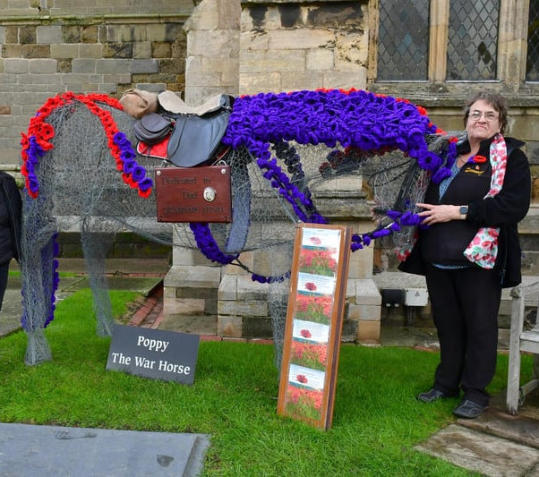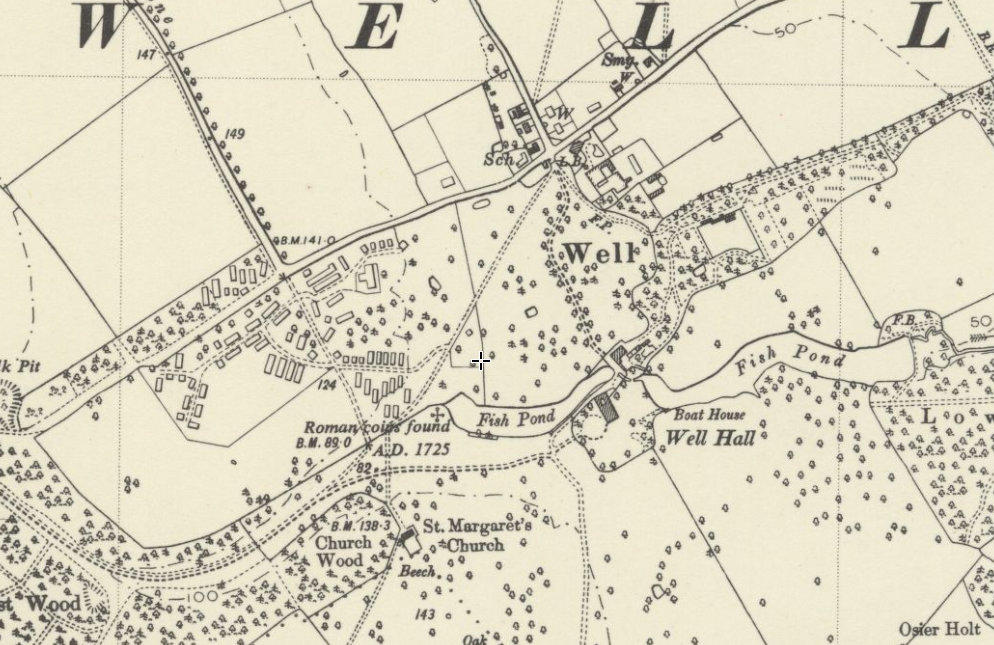WW2 PRISONER OF WAR CAMP
The first prisoners of war (POWs) taken in Britain during the Second World War
were German pilots, aircrew or naval personnel.
In the first years of the war their numbers were small - rather than being held in
Britain, they were generally sent further away to parts of the British Empire.
From July 1941, Italian prisoners captured in the Middle East were brought to
Britain. This was the first major influx of prisoners of war to the country.
Italian POWs presented one way of alleviating labour shortages, particularly in
agriculture. Following the Italian surrender in 1943, 100,000 Italians volunteered
to work as 'co-operators'. They were given considerable freedom and mixed with
local people.
German prisoners flooded into Britain from the summer of 1944 following the D-
Day landings in France. Although there was an initial reluctance to employ them
for labour, 70,000 were working in Britain by March 1945.
In the wooded area there is the remains of an old cottage. And what is said to be
the concrete floor of a WW2 hospital, where kids used the floor for roller skating.
Dr Malpass (see below) sent me a link in July 2025 to the map showing the
layout of the POW camp from a map - OS Six-inch England and Wales, 1842-
1952.
I contacted Dr Alan Malpass to ask about the camp and this was his reply:
From what I know, the site at Well was a 'hostel', a smaller temporary camp that
would have housed anywhere between 30 to 300 POWs. As it was a smaller
'hostel', not many official documents survive. There are some mentions of Well in
post-war re-educational surveys, however.
It is described in English Inspector's Reports (they were sent to report on how the
provision of English language classes was progressing in camps after 1945) as
'No. 4 BD Unit Well Camp'. The BD refers to 'Bomb Disposal' and it is likely that
the German POWs were working under the Royal Engineers clearing bombs in
the surrounding area/nearby the Well Camp. Reports suggest that there were
124 German POWs accommodated in huts at Well in April 1948. I have a hunch
that POWs were accommodated at Well Vale Hall, but I've not found anything
concrete.
The camp at Well was administered (along with several others: Wellingore Hall,
Bassingham, Walcot, Sibsey, Skellingthorpe) by the main POW camp #79 at
Moorby.
It is very difficult to recover the history of the smaller sites, so recording any
memories of them is vital! I'd be very interested in hearing what you find out
about Well.
Sorry that I cannot provide more information. If you do have any further questions
about the POW camps in Lincolnshire or the history of Italian and German POWs
in Britain, don't hesitate to email me.
Dr Alan Malpass PhD MA BA (Hons) AFHEA
Lecturer in Military History
Some information emailed to me from Stephen Green:
It is definitely ww2 as it is built from reinforce concrete and bricks. It shows the
footing where the huts were on and also the toilet block. And lovely steps taking
you down into the camp.
If you have any further information on the POW camp or better still any photos
that would be greatly appreciated. Send them via the contact us page.
Remembrance Day
In nearby Louth there is a group of lovely ladies called ‘Kntting Nannies’ who
throughout the year knit public artwork for display. In 2023 they decorated the
church there with thousands of poppies knitted through out the year including a
war horse and often decorate the post box in Well. Below are some photographs
of their work. Thank you ladies for making such lovely surprises.
Click here for an article on WW1 Prisoners of War in South Lincolnshire
Read about the Revesby Estate POW camp
Some memories of a child in Lincolnshire and the POWs




























